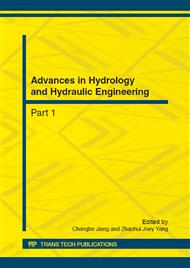p.316
p.323
p.327
p.332
p.336
p.341
p.345
p.351
p.358
Laboratory Investigation on Tsunami Wave Runup
Abstract:
The 2D laboratory experiments were performed to investigate tsunami wave runup on the combined sand beach. The N-wave was generated in three different water depths. The water surface elevations, maximum elevation of runup and snapshots of wave uprush and back wash were measured. The theoretical analysis of runup was presented. The results showed that uprush water wave had a decelerate process. The maximum elevation of runup R depends on incident wave height H and R is linear relationship with H plus water depth h.
Info:
Periodical:
Pages:
336-340
Citation:
Online since:
October 2012
Authors:
Keywords:
Price:
Сopyright:
© 2012 Trans Tech Publications Ltd. All Rights Reserved
Share:
Citation:


